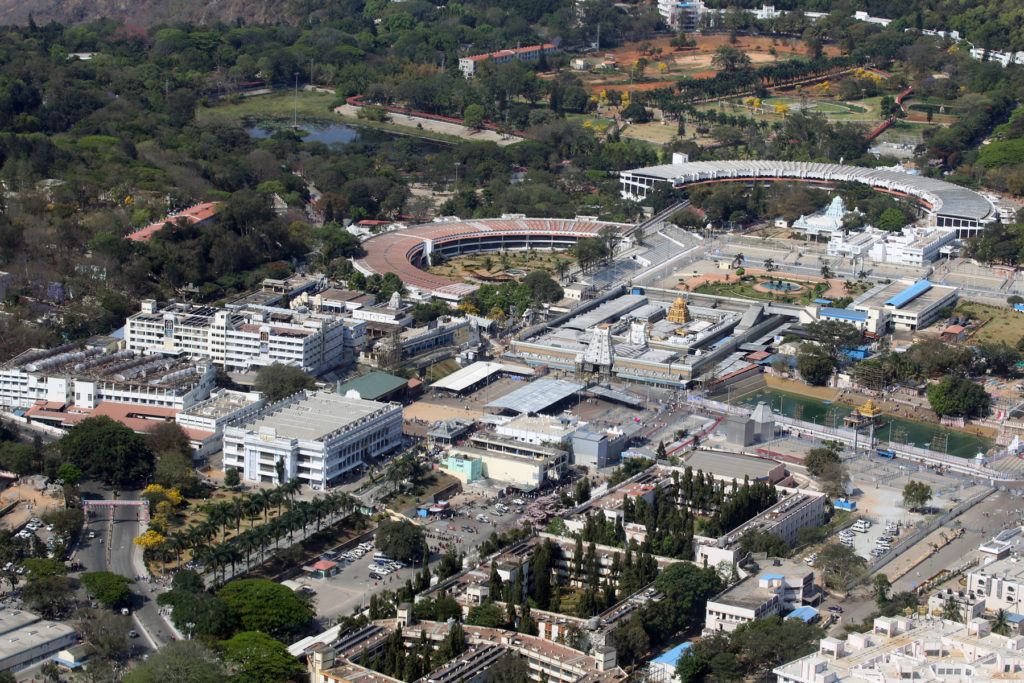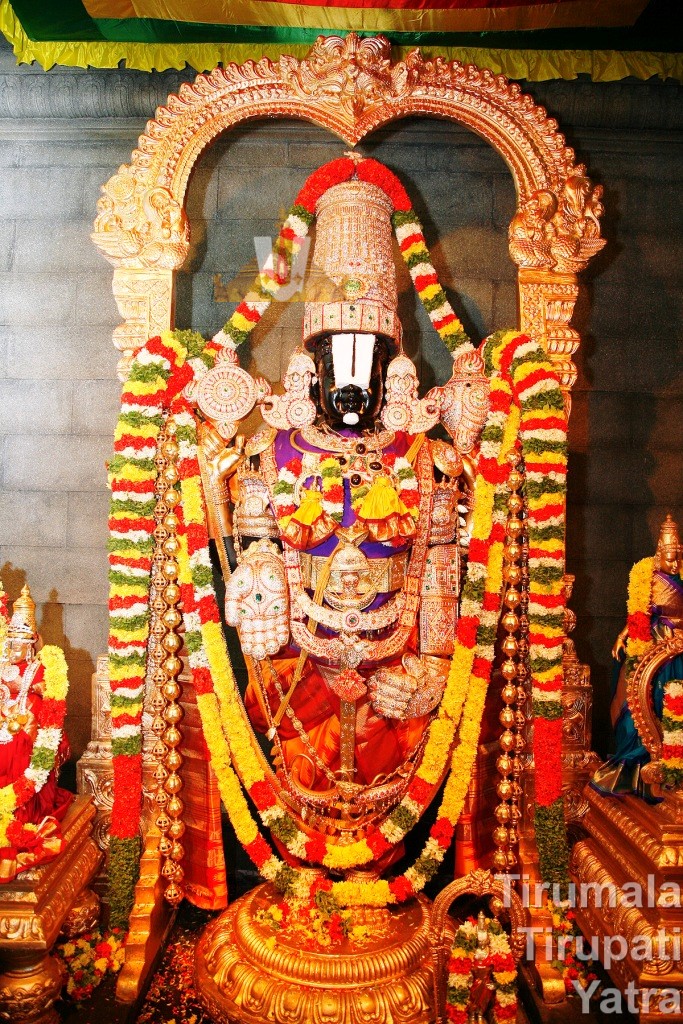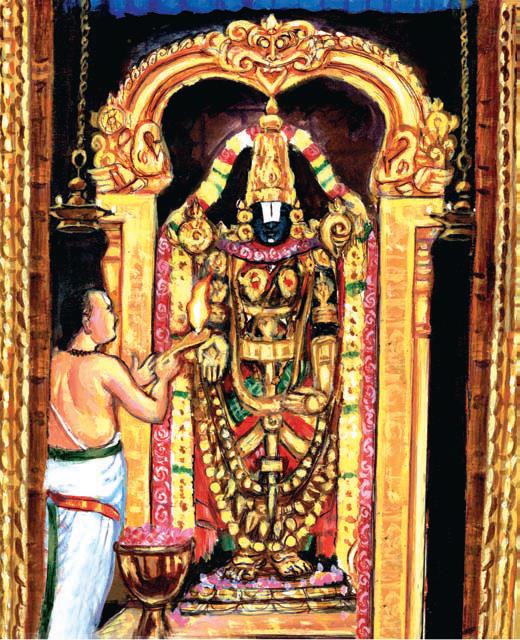Glory of Tirupati Balaji
Lord Sri Venkateswara is the supreme God. Devotees across the world throng the holy shrine in Tirumala throughout the year to offer their vows on fulfillment of their wishes. A glimpse of God even for a few seconds will make them forget their travails of the journey.
Bhakta Sulabha
Generally, it is believed that God is in his heaven quite far away from this world and it is very difficult to reach Him unless one follows an austere course of conduct involving shama, dama, niyama, pratyahara, pranayama, etc., and performs yajnas, yagas and vratas.
This may be true of God in his Para, Vyuha, Vibhava, Antaryamin forms, but not in the case of Archavatara. God assumes the form of an image or idol for the sake of humanity and comes within their reach.
Lord Vishnu reclines on Adi Sesh in Vaikuntha as His three consorts—Sri Devi, Bhu Devi, and Neela Devi gladly press His feet. He has come down to Seshadri on the earth as Lord Venkateswara. He answers the prayers of devotees who worship Him sincerely and wholeheartedly.
Hence, He is befittingly called Bhakta Sulabha or Bhakta Varada. It is believed that Brahma, Rudra, Indra, Maruth, Arka, and other angels and saints throng the temple of Tirumala to witness the underlying treasure and energy unveiled in the form of Tirupati Balaji – Lord Venkateswara.
Divine Significance of the Locale
Every part of Tirumala is miraculous and invested with divine significance. Though Tirumala is known for its beautiful natural surroundings, it is not proper to visit Tirumala for a pleasure trip to enjoy its scenic beauty. In doing so, we miss the spiritual significance of Tirumala.
It is assumed that the angels and saints have become the boulders, brooks, waterfalls, trees, and animals on Tirumala to be close to the Lord and stay blessed either in the animate or inanimate form. That is why, we should regard every part of the locale with great reverence.
The entire hill is a boon-giver. One can perceive it if one opens one’s “third eye”, the inner eye of wisdom with all one’s devotional fervor.
Kundalini Shakti
There are seven hills in Tirumala, namely—
- Seshadri,
- Neeladri,
- Garudadri,
- Anjanadri,
- Vrushabhadri,
- Narayanadri, and
- Venkatadri.
They are regarded as the incarnation of thousand-hooded Adi Sesha. Adi Sesha, the serpent bed of the Lord, is a symbol of Kundalini energy.
The seven hills are symbols of its awakening from muladhara chakra through swadhishthana, manipuraka, anahata, vishuddha, ajnya to sahasrara leading to the explosion of wisdom in the form of unlimited brilliance.
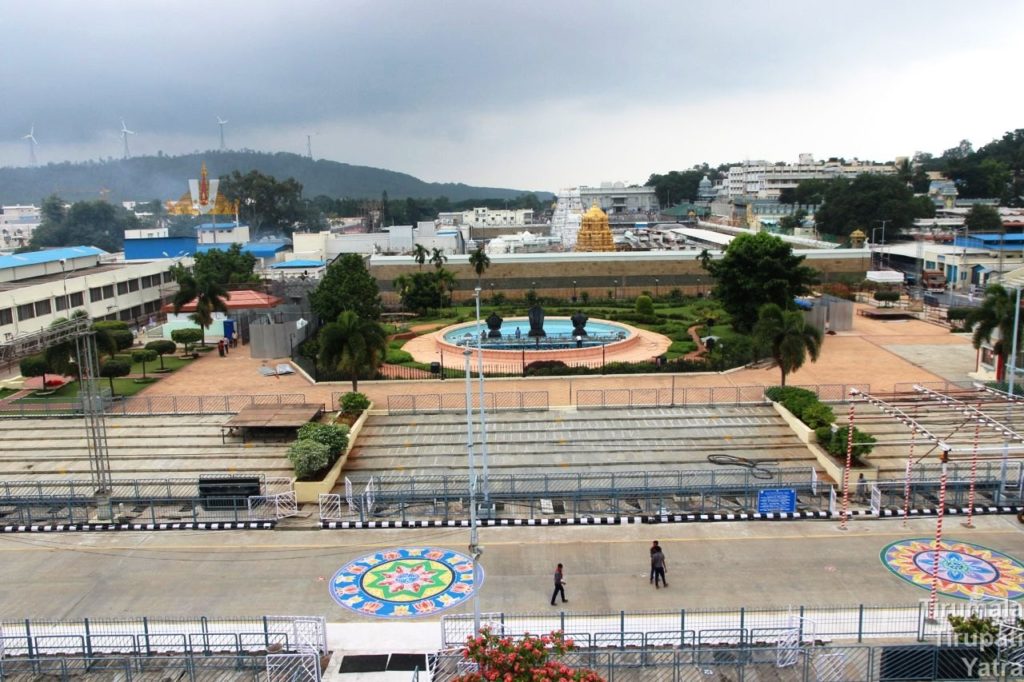
Tirumala Hills – Heaven on Earth
Tirumala is regarded as the ultimate heaven, Paramapada, heaven on the earth in Kaliyuga. Lord Venkateswara is regarded as Kalki, the tenth incarnation of God. He is especially here to save humanity from the evil effects of Kaliyuga.
It is said, Kalou Sri Venkata Nayakah. The devotees believe that there is no need to go on a pilgrimage to any place other than Tirumala because Tirumala is the epitome of all holy shrines. It fulfils all the desires of the devotees.
It is believed that there has not been any temple equivalent to Venkatadri in the entire world either in the past or present and there will not be any in the future as enunciated in the shloka “Venkatadri samasthanam Brahmande Nastikinchana..”.
Origin of Seshachala
There are a few legends connected to the origin of Seshachala on the earth. According to Varaha Purana, Lord Vishnu incarnates Himself as Adi Varaha and rescues the Earth from Hiranyaksha by killing him.
On the plea of Brahma and other angels, He decides to stay on the earth for the welfare of humanity. He orders Brahma to recreate the world as before. He asks his Vahana Garuda to fetch Kridachala from Vaikuntha and place it in a chosen sacred spot near the Suvarnamukhi River. It is to the east of Swami Pushkarini now.
This Kridachala is the present Seshachala. Another legend says that once in Dvapara Yuga, Adi Sesha resisted the entry of Wind- God Vayu into Vaikuntha as Lord Vishnu was in solitude with His consort Lakshmi.
Angry Vayu challenges Adi Sesha for a duel to test their power. Adi Sesha ties himself to the Meru mountain and asks Vayu to move the mountain if he can. After a long trial when Vayu seemed to relent, Adi Sesha heaves a sigh and lifts his hood as a sign of victory.
Seizing the opportunity, Vayu blows off one of the peaks of Meru which lands near the Swarnamukhi River. Adi Sesha comes down to merge with it on the advice of Vishnu. Thus, the peak of Meru gets the name Seshachalam on which Lord Venkateswara resides.
Five Forms of Vishnu
According to VaicGava theology, VicGu has five forms of manifestation, namely –
- para,
- vyuha,
- vibhava,
- antaryamin and
- archa.
- The para (transcendent) form is Vasudeva, the Supreme Being, beyond the reach of human experience.
- The vyuha (emanative) form is his functional manifestation as the creator, protector and destroyer of the universe.
- The vibhava (incarnate) is the physical form in which he descends into the world.
- The antaryamin (immanent) is the indweller of the jiva.
- Finally, the archa form is His manifestation in the iconic form receiving ritualistic worship from them in temples and their homes.
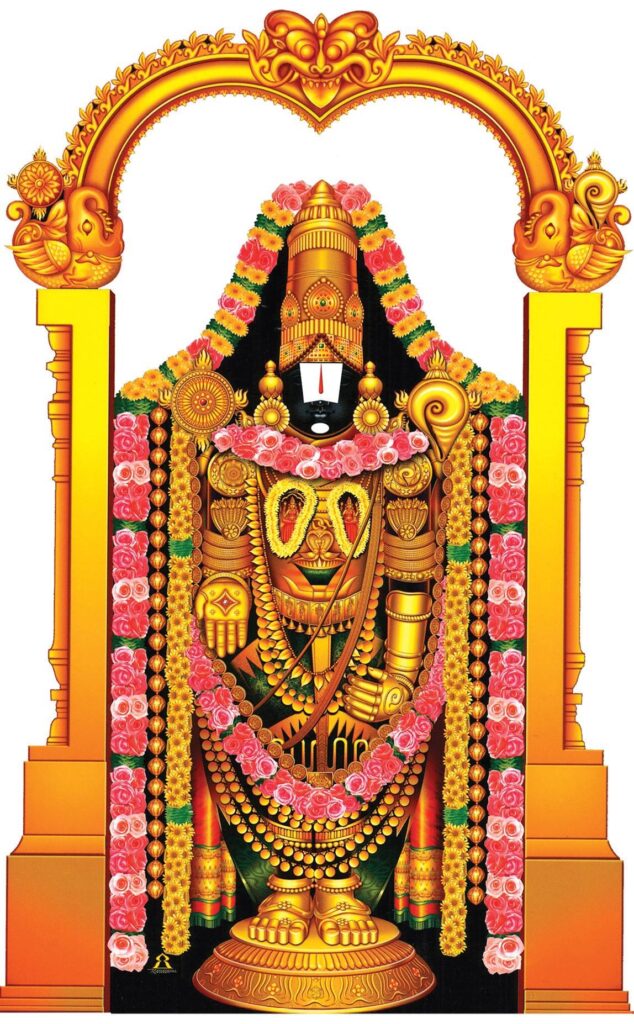
Ancient References to the Lord
We find references to Lord Venkateswara in Varaha Purana, Brahmanda Purana, and Bhavishyottara Purana. The first verifiable reference to the place is found in Silappadikaram, a Tamil treatise on grammar. References to the Vengadam hill are found in the Tolkappiyam (fifth century B. C.) and Sangam poet Mamulanar of the second century.
A subsequent work of the same century, llango Adigal’s Silappadikaram, however, refers both to the Vengadam hill and the blue-hued Vishnu who holds the weapons shankha and chakra in his arms. Subsequently, at least ten of the twelve Alwars have sung the praises of the Lord of Tirupati.
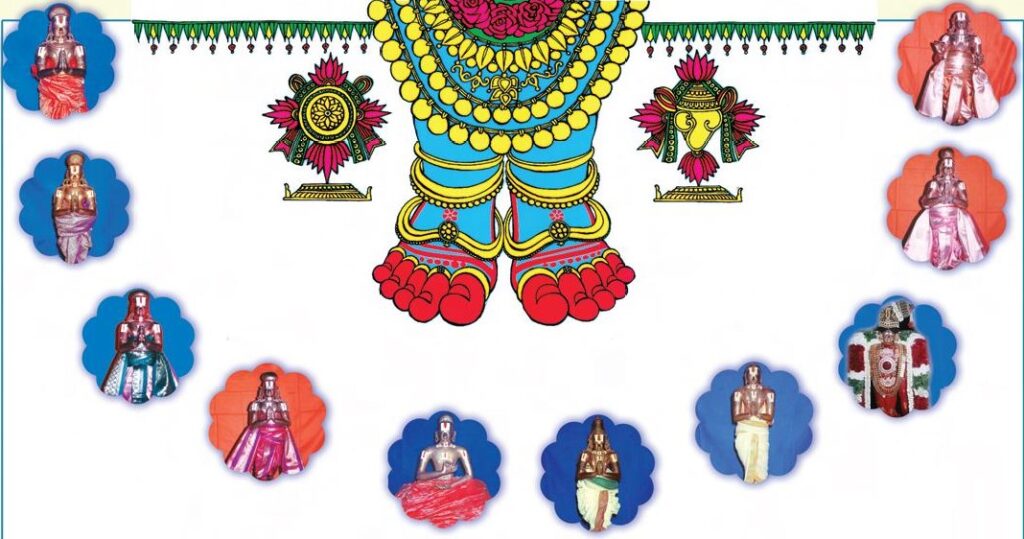
Many devotees like Annamayya, Purandaradasu, Vengamamba, Tyagaraju, and others have sung His glory and resorted to His nama parayana or sankirtana.
Other Precepts of Vishismadvaita
Besides the above, Vishismadvaita advocates the glorification of
- Lord’s abhaya hasta (the hand of assurance) and feet,
- Sripada tirtham (consecrated water of Lord’s feet),
- Tirumani (a kind of white clay used in making the sectarian mark of a Srivaishnava),
- chakrankitas or mudra (the mark of the discus and the conch pressed on the shoulders of a Srivaishnava),
- Saranagati (self-surrender or seeking refuge with the Lord),
- acarya nishmha (commitment to the preceptor),
- bhagavata nishtha and kainkaryam (commitment and service to the devotees of the Lord),
- mangalasasanam to the Lord (auspicious benediction upon the Lord) and others.
